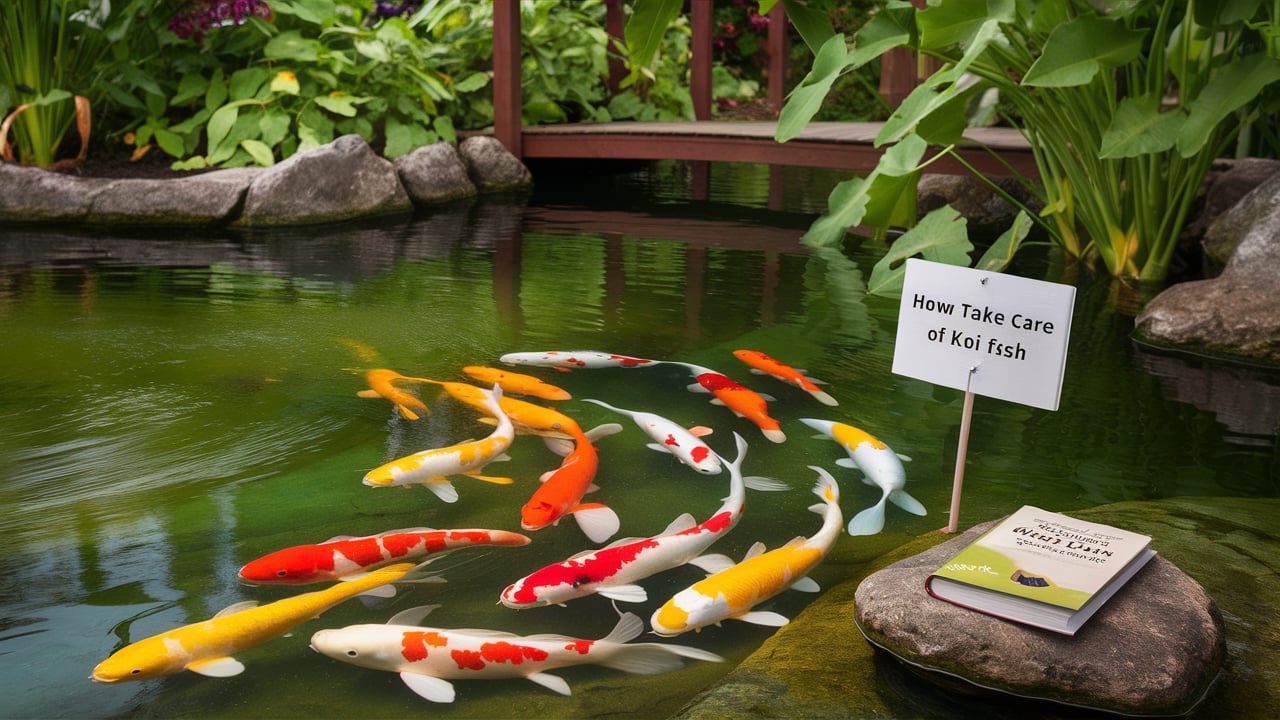Koi fish, with their vibrant colors and graceful movements, are a captivating addition to any water garden or pond. These majestic creatures, known for their longevity and beauty, require careful attention and proper care to thrive. In this comprehensive guide, Koi Fish Beauty will take you on an exciting journey, exploring the essential steps to ensure your koi fish live long, healthy, and vibrant lives.
Understanding Koi Fish: A Journey of Discovery
Koi fish, a variety of the common carp, are renowned for their stunning colors and patterns. Their journey from humble carp to prized ornamental fish is a testament to selective breeding and the dedication of koi enthusiasts.
Imagine yourself embarking on a journey to Japan, the birthplace of koi breeding, where you’ll witness the meticulous care and artistry involved in cultivating these beautiful creatures.
Setting Up Your Koi Pond: Creating a Paradise for Your Fish
Before welcoming koi into your life, it’s crucial to create a suitable environment for them to thrive. A well-designed koi pond is more than just a water feature; it’s a carefully crafted ecosystem that replicates their natural habitat.
Pond Size and Depth
- Think of your koi pond as a luxurious resort for your fish. A larger pond provides ample space for swimming and growth, while adequate depth ensures they can comfortably overwinter.
- Experts recommend a minimum depth of 4 feet for koi ponds, with a larger size being ideal for multiple fish.
Filtration
- Just like a well-maintained hotel, your koi pond needs a robust filtration system to keep the water clean and healthy.
- Koi produce a significant amount of waste, so a multi-stage filtration system is essential to remove debris, ammonia, and other harmful substances.
Water Quality
- Koi are sensitive to water quality fluctuations, so maintaining a stable environment is crucial for their well-being.
- Regular water testing is essential to monitor pH levels, ammonia, nitrite, and nitrate levels.
Feeding Your Koi: A Culinary Adventure
Koi are omnivores, meaning they enjoy a diverse diet.
High-Quality Koi Food
- Think of their diet as a gourmet culinary experience, tailored to their specific needs.
- High-quality koi food provides essential nutrients, vitamins, and minerals for optimal growth and health.
Feeding Frequency
- Just like humans, koi need a balanced diet and should not be overfed.
- Feed your koi twice a day, in the morning and evening, with an amount they can consume within a few minutes.

Variety
- To keep your koi engaged and healthy, offer a variety of foods, including pellets, flakes, and occasional treats like vegetables and worms.
Maintaining Your Koi Pond: A Journey of Care
A well-maintained koi pond is essential for the health and longevity of your fish.
Regular Cleaning
- Just like a hotel needs regular cleaning, your koi pond requires routine maintenance to remove debris and maintain water quality.
- Skim the surface of the pond regularly to remove leaves, twigs, and other debris.
Water Changes
- Periodic water changes are essential to replenish nutrients and remove accumulated waste.
- Aim for a partial water change of 10-20% every week or two.
Winter Care
- Koi are cold-water fish, but they need protection during the winter months.
- Ensure the pond water remains above freezing, and consider adding a de-icer to prevent ice formation.
Essential Water Quality Parameters
Here are the key water quality parameters to monitor and maintain in your koi pond:
pH
- pH measures the acidity or alkalinity of water.
- The ideal pH range for koi is between 7.0 and 8.0.
- Too acidic water (below 7.0) can stress koi and make them susceptible to disease.
- Too alkaline water (above 8.0) can also be harmful, affecting their ability to absorb nutrients.
Ammonia
- Ammonia is a toxic waste product produced by fish and decaying organic matter.
- High ammonia levels can be fatal to koi.
- A healthy koi pond should have an ammonia level of 0 ppm (parts per million).
Nitrite
- Nitrite is an intermediate product in the nitrogen cycle, a natural process that converts ammonia into less harmful nitrates.
- High nitrite levels can also be toxic to koi.
- A healthy koi pond should have a nitrite level of 0 ppm.
Nitrate
- Nitrate is the final product of the nitrogen cycle.
- While less toxic than ammonia and nitrite, high nitrate levels can still stress koi and make them susceptible to disease.
- A healthy koi pond should have a nitrate level below 20 ppm.
Dissolved Oxygen
- Koi need dissolved oxygen to breathe.
- Water movement and aeration help to increase dissolved oxygen levels.
- A healthy koi pond should have a dissolved oxygen level of at least 5 ppm.
Koi Health: A Journey of Wellness
Koi, like any living creature, are susceptible to illnesses.
Regular Observation
- Just like a doctor checks for signs of illness, it’s essential to observe your koi regularly for any signs of disease.
- Look for changes in behavior, appetite, or appearance.
Quarantine
- If you introduce new koi to your pond, quarantine them for a few weeks to prevent the spread of disease.
Veterinary Care
- If you suspect your koi are ill, consult a qualified fish veterinarian for diagnosis and treatment.
Conclusion
Caring for koi fish is a rewarding experience, offering a glimpse into the fascinating world of aquatic life. By following these guidelines, you can create a thriving environment for your koi, ensuring they live long, healthy, and vibrant lives.

Related Posts
Does Koi Fish Bite? The Truth About Koi Behavior
Koi Fish Ulcer: Understanding and Preventing This Health Issue
Colors Of Koi Fish: A Journey Through Nature’s Palette